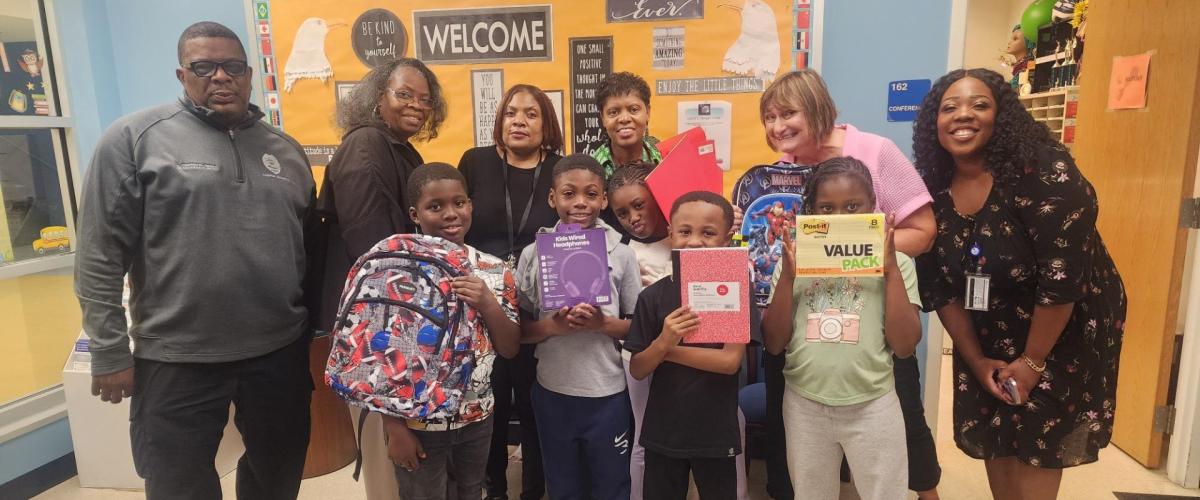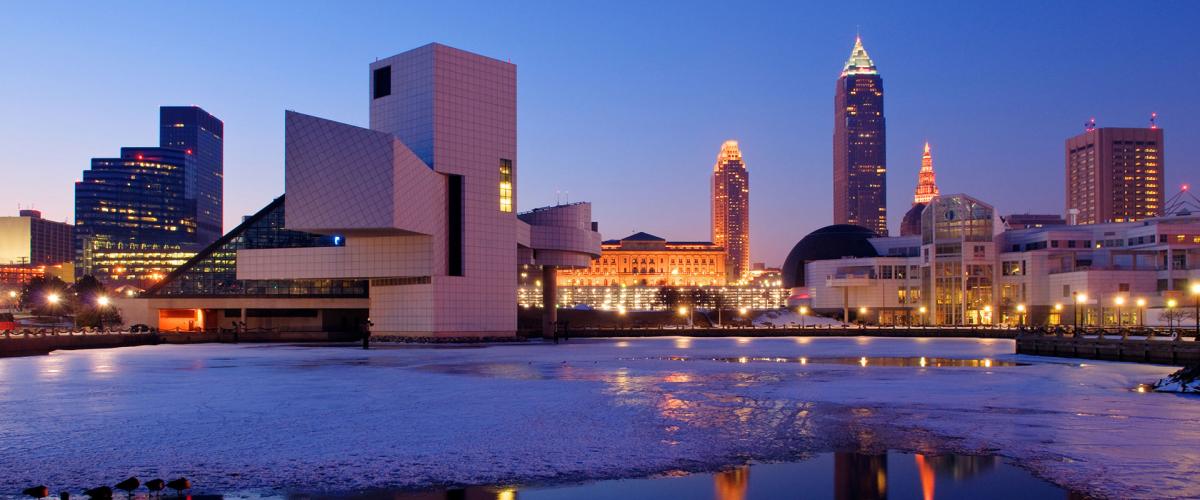New exhibit features reflective works by artists who are incarcerated at Grafton Correctional Institution
On display at Case Western Reserve University Wade Park Community Engagement Center
An unconventional art exhibit now on display at the Case Western Reserve University Wade Park Community Engagement Center is moving observers perhaps in ways they didn’t expect:
“For me, this piece brought to light the simplest form of sweetness and humanity.”
“I see a lot of chaos in this piece. She’s beautiful, yet you see the ugly parts, the darkness around the eyes, the heavy lips, the shadows of another self.”
“Here, you can see the artist’s face reflected in a ‘player,’ a type of tablet that can be used to download emails and video grams. He’s boxed in by the bedsprings behind him, grounding us in his restricted carceral world.”
The exhibit, titled “One Art One Community,” features 46 pieces by 16 artists who are incarcerated at the Grafton Correctional Institution. Their artwork represents a variety of styles and techniques, paired with community reflections on selected works, such as the observations quoted above.
“Art has the capacity to help us express joy and deal with difficulties,” said Sharon Milligan, the Grace Longwell Coyle Associate Professor in Social Work at the Jack, Joseph and Morton Mandel School of Applied Social Sciences, who provided her perspective on the display’s broader significance. “Exhibitions like this give people hope. It gives them the privilege of being acknowledged and lets them know that the world doesn’t have to be the way it is today.”
The exhibit, hosted by the Case Western Reserve Office of Government and Community Relations, in partnership with the university’s Putnam Art Collection, is on display weekdays 9 a.m. to 5 p.m. through Jan. 9. The Wade Park Community Engagement Center is at 11310 Wade Park Ave., near the University Circle campus.
“We are excited to provide a venue at the Wade Park Community Engagement Center to showcase the beautiful works created by the artists at the Grafton facility,” said Julian Rogers, Case Western Reserve’s associate vice president for local government and community relations “We appreciate this partnership and hope that our friends and neighbors will take time to visit it and see firsthand the talent that is on display.”
The idea for the exhibit originated from two Case Western Reserve alums, retired Cleveland federal prosecutor Ann Rowland (CWR '73, LAW '76), and former CWRU history professor and SAGES teaching fellow Ben Sperry (GRS '10, history), who has a particular academic interest in African American history, civil rights, race and social justice. Both were involved in the University of Michigan’s well-established Prison Creative Arts Project and suggested having a similar program here.
Kathy Barrie, director of CWRU’s Putnam Art Collection, and Elizabeth Bolman, the Elsie B. Smith Professor in the Liberal Arts and professor and chair of art history at the College of Arts and Sciences, enthusiastically supported the idea.
So, Rogers, Bolman, Sperry, Marilyn Burnett, associate curator of the Putnam Collection, Megan Alves, who recently graduated with a master’s degree in art history after working as an intern on the project, and art history student Lachelle Oglesby, visited the Grafton Correctional Institution to select the artwork.
“Every creative shares a unique connection that transcends circumstances and locations,” said Eric Gardenhire, who created and directs the arts and crafts program at Grafton. “The power of connecting with others on the same creative journey is transformative. Creativity is contagious.”
Gwendolyn Garth, a local artist, activist and member of the CWRU Neighborhood Advisory Council, worked with Alves to select nine community members to interview, capturing and displaying their impressions of the artwork as “voice labels.”
“The hope,” Burnett said, “is to continue the program with works from additional correctional facilities across Ohio and to include the art in local educational and artistic programs.”




